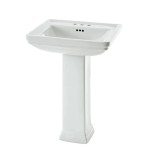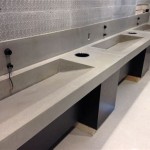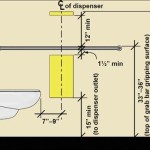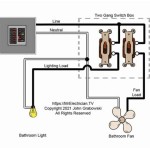Labor To Replace Bathroom Faucet: A Comprehensive Guide
Replacing a bathroom faucet is a common home improvement task that can significantly enhance the aesthetic appeal and functionality of a bathroom. While some homeowners may opt to handle this project themselves, hiring a qualified plumber or handyman for the labor to replace a bathroom faucet offers numerous advantages. This article provides a comprehensive overview of the process, considerations, and potential benefits of professional installation.
The initial step in any faucet replacement project involves identifying the existing faucet type and determining compatibility with the existing plumbing configuration. Bathroom faucets come in various styles, including single-handle, double-handle, widespread, centerset, and wall-mounted options. Each style requires specific plumbing connections and mounting hardware. A professional installer can assess the current setup and advise on suitable replacement options, mitigating the risk of purchasing an incompatible faucet.
Furthermore, assessing the condition of the existing water supply lines and drain assembly is crucial. Over time, these components can corrode or become damaged, potentially leading to leaks or reduced water flow. A professional plumber can identify any issues and recommend necessary repairs or replacements, ensuring the longevity and efficiency of the new faucet installation.
Pre-Installation Preparations
Before beginning the replacement process, several preparatory steps are essential. The first step is to shut off the water supply to the bathroom faucet. Typically, shut-off valves are located beneath the sink. If individual shut-off valves are absent, the main water supply to the house must be turned off. This prevents water damage and facilitates a safe working environment.
Protecting the surrounding surfaces is also crucial. Covering the countertop and floor with drop cloths or protective sheeting prevents scratches, dents, and stains during the removal and installation process. Additionally, gathering the necessary tools and materials ensures a smooth and efficient workflow. Essential tools include a basin wrench, adjustable wrench, pipe wrench, plumber's tape, putty knife, and safety glasses. The appropriate replacement parts, such as supply lines, drain assembly components, and plumber's putty, should also be readily available.
The removal of the existing faucet requires careful attention to avoid damaging the sink or countertop. Disconnecting the water supply lines and drain assembly is typically the first step. A basin wrench is particularly useful for loosening the nuts that secure the faucet to the sink, especially in tight spaces. Once the connections are detached, the old faucet can be carefully lifted out of the sink. Any remaining plumber's putty or sealant should be removed from the sink surface using a putty knife. Thoroughly cleaning the area ensures a proper seal and prevents future leaks.
Faucet Installation: A Step-by-Step Approach
The installation of the new faucet involves several critical steps that must be performed accurately to ensure proper functionality and prevent leaks. The initial step is to apply plumber's putty to the base of the new faucet, creating a watertight seal between the faucet and the sink. The faucet is then carefully positioned within the mounting holes and secured from beneath the sink using the provided hardware.
Connecting the water supply lines is a crucial step. New supply lines are recommended to ensure optimal water flow and prevent leaks. Plumber's tape should be applied to the threads of the supply line connections before tightening the fittings. The supply lines are then connected to the faucet and the shut-off valves beneath the sink. It is essential to tighten the connections sufficiently to prevent leaks, but overtightening can damage the fittings.
The installation of the drain assembly is equally important. The drain flange is inserted into the drain opening of the sink, and plumber's putty is applied to create a watertight seal. The drain assembly is then secured from beneath the sink using the provided hardware. The drainpipe is connected to the drain assembly, ensuring proper alignment and secure connections. It is important to follow manufacturer's instructions during this process.
Post-Installation Checks and Troubleshooting
After the faucet is installed, a thorough inspection is necessary to ensure there are no leaks and that the faucet functions correctly. The water supply should be slowly turned on, and all connections should be carefully checked for any signs of leakage. If leaks are detected, the connections should be tightened or re-sealed as necessary.
Testing the faucet's functionality is also crucial. The hot and cold water should be turned on and off to verify proper water flow and temperature regulation. The drain should also be tested to ensure it drains properly and does not leak. Any issues with water pressure or drainage should be addressed promptly. If problems persist, consulting with a professional plumber is recommended.
Proper cleanup after the installation is essential. All debris, tools, and materials should be removed from the work area. The sink and surrounding surfaces should be cleaned to remove any remaining plumber's putty or sealant. The old faucet and packaging materials should be disposed of properly. A clean and organized workspace demonstrates professionalism and attention to detail.
Benefits of Professional Labor
While DIY faucet replacement is a viable option for some homeowners, hiring a professional plumber or handyman offers several distinct advantages. Professionals possess the experience, expertise, and specialized tools necessary to complete the job efficiently and effectively. They can also identify and address any underlying plumbing issues that may not be apparent to a less experienced individual.
One of the primary benefits of professional installation is the assurance of proper installation techniques. Professionals are trained to follow industry best practices and ensure that all connections are secure and leak-free. This reduces the risk of future plumbing problems and potential water damage. Additionally, professionals typically offer a warranty or guarantee on their work, providing peace of mind in the event of any issues.
Furthermore, professional plumbers are familiar with local plumbing codes and regulations. They can ensure that the faucet installation complies with all applicable requirements, avoiding potential fines or penalties. They can also advise on selecting a faucet that meets specific performance standards and water efficiency requirements. In some jurisdictions, certain plumbing work requires a permit, which a licensed plumber can obtain. Hiring a professional ensures compliance and avoids potential legal issues.
In summary, the labor to replace a bathroom faucet encompasses a range of tasks, from initial assessment and preparation to installation and post-installation checks. While DIY options exist, professional installation offers numerous benefits, including expertise, efficiency, and compliance with regulations. Understanding the process and the advantages of professional labor enables homeowners to make informed decisions regarding their bathroom renovation projects.

2024 Cost To Replace Bathroom Faucet

2024 Cost To Replace Bathroom Faucet

How To Replace Faucets In The Bathroom Modernize

Average Cost To Install Or Replace A Faucet 2024 Forbes Home

Average Cost To Install Or Replace A Faucet 2024 Forbes Home

2024 Cost To Replace Bathroom Faucet

2024 Cost To Replace Bathroom Faucet

What S The Average Faucet Installation Cost In 2024

2024 Cost To Replace Bathroom Faucet

Average Cost To Install Or Replace A Faucet 2024 Forbes Home
Related Posts







